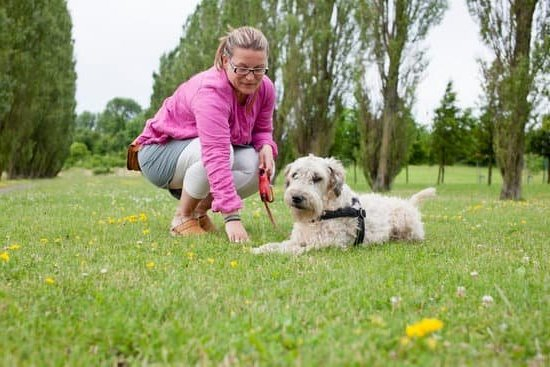Police dogs play a crucial role in law enforcement, assisting officers in various tasks such as search and rescue, apprehension of suspects, and detection of illegal substances. In this article, we will explore the process of training these specialized K9 units to become effective partners for police officers.
We will delve into the different aspects of police dog training, from selecting the right breed to mastering obedience and discipline, as well as the future of training techniques and technologies. This section will provide an overview of the essential elements involved in preparing police dogs for their vital role in maintaining public safety.
Training police dogs is a meticulous process that requires dedication, patience, and expertise. It involves developing specific skill sets that are tailored to meet the unique demands of law enforcement work. From scent work to aggression control, police dog training encompasses various areas that are essential for producing highly adept K9 units. In this article, we will examine each aspect in detail, offering insights into how these remarkable animals are prepared to serve alongside their human counterparts.
Effective police dog training goes beyond just teaching commands; it also entails building a strong bond between the canine and their handler. This partnership is built on trust, respect, and mutual understanding – qualities that are crucial for success in high-pressure situations. Throughout this section, we will explore the methods used to cultivate this special relationship and highlight its significance in enhancing the effectiveness of police dog teams.
The Characteristics and Breeds of Successful Police Dogs
Characteristics of Successful Police Dogs
Successful police dogs possess certain characteristics that make them well-suited for the job. These traits include intelligence, agility, physical strength, and a strong work ethic. Additionally, police dogs should have a high energy level and be able to remain focused in various environments and situations.
Breeds Suited for Police Work
Not all dog breeds are suitable for police work. The most common breeds used as police dogs are German Shepherds, Belgian Malinois, Dutch Shepherds, and Labrador Retrievers. These breeds are known for their intelligence, trainability, physical stamina, and loyalty.
Selecting the Right Candidate
When selecting a dog for police training, it’s important to consider not only the breed but also the individual personality and temperament of the dog. Each dog is unique, and it is crucial to choose one that exhibits the appropriate traits for police work such as courage, confidence, and an inherent desire to work alongside their handler.
Training dogs for police work requires specialized techniques and methods that take into account the specific needs of law enforcement agencies. Different breeds require different approaches to training in order to maximize their potential in the field.
To effectively train police dogs, handlers must possess a deep understanding of canine behavior and psychology. By building a strong foundation of mutual trust and respect between the handler and the K9 partner, successful police dog training can be achieved.
Through consistent training and dedication from both the officer and their canine companion, law enforcement agencies can rely on well-trained police dogs to assist in various tasks such as detection work, search and rescue missions, apprehending suspects, protecting officers from harm, as well as building stronger community relations through public demonstrations and outreach programs.
The Importance of Obedience and Discipline in Police Dog Training
Training police dogs is a complex and crucial task that requires dedication, knowledge, and patience. One of the most important aspects of police dog training is instilling obedience and discipline in these working canines. Without these qualities, a police dog would not be able to perform their duties effectively in the field. Here are some key points on the importance of obedience and discipline in police dog training:
- Obedience Training: Obedience training is essential for police dogs as it ensures that they respond promptly and reliably to their handler’s commands. This includes basic commands such as sit, stay, come, and heel, as well as more advanced commands that are specific to law enforcement tasks.
- Discipline: Police dogs must exhibit a high level of discipline in various situations, including when encountering distractions or facing potential threats. They need to remain focused on their task at all times and resist engaging with anything or anyone not relevant to their mission.
To train a successful police dog in obedience and discipline, it is crucial for handlers to use positive reinforcement techniques, such as rewards and praise, to encourage desired behavior. Consistent training sessions and clear communication between the handler and the K9 partner are also vital for building trust and understanding. Moreover, regular socialization with different environments, people, and animals is important for teaching police dogs to remain disciplined even in challenging situations.
Obedience and discipline are fundamental aspects of police dog training that directly impact the success of their assignments. With proper training techniques and consistent practice, skilled handlers can mold their canine partners into reliable assets for law enforcement agencies.
The Role of Scent Work and Tracking in Police Dog Training
Introduction to Scent Work and Tracking
Scent work and tracking are crucial elements of police dog training, as they enable K9 units to assist law enforcement in locating missing persons, suspects, narcotics, and explosives. Dogs have an incredible sense of smell, which is far superior to that of humans, making them invaluable assets in detecting scents over long distances and in various environments.
This section will delve into the importance of scent work and tracking in police dog training, as well as the specific techniques used to develop these skills in K9 units.
Training Methods for Scent Work and Tracking
One of the key aspects of training police dogs for scent work and tracking is developing their ability to differentiate between scents and identify specific odors. Trainers use a variety of methods, including positive reinforcement, reward-based training, and play-based activities to hone the K9 unit’s olfactory skills.
Additionally, dogs are taught to track scents across different terrains and conditions, such as urban areas, forests, or buildings. This requires extensive training and exposure to various environments to ensure that the K9 unit can perform effectively in real-world scenarios.
The Real-Life Application of Scent Work and Tracking
Once a police dog has been trained in scent work and tracking, they become invaluable assets in law enforcement operations. Whether it’s locating a lost child in the woods or tracking down a suspect who has fled a crime scene, these highly-trained K9 units play a critical role in assisting officers with their heightened senses and abilities.
Utilizing their keen sense of smell and tracking instincts, police dogs are able to cover large areas quickly and efficiently, providing crucial support to law enforcement agencies during search missions or criminal investigations.
By employing specialized techniques tailored to each breed’s unique characteristics – such as German Shepherds or Belgian Malinois – trainers can ensure that K9 units are proficient in scent work and tracking tasks essential for effective police dog operations.
In essence, scent work bridges communication gaps between law enforcement officers through sensorial information exchange determined by behavior modification interactions paramount during operations that enhance overall safety measures for both officers on duty involvement levels at any given point due diligence methods necessary carrying out due diligence grow on interest compound itself through interaction strategies extrapolated efficiently when prompted within prototype expectations
Aggression Control and Protection Training for Police Dogs
Aggression control and protection training are crucial aspects of police dog training. It is essential for police dogs to be able to protect themselves, their handlers, and the public from potential threats. Here are some key techniques used in aggression control and protection training for police dogs:
- Desensitization: In this training technique, police dogs are exposed to various stimuli that may trigger aggressive behavior, such as loud noises or sudden movements. Through repeated exposure and positive reinforcement, the dogs learn to remain calm and focused in these situations.
- Bite Work: This specialized training teaches police dogs how to apprehend suspects using controlled biting techniques. The dogs are trained to only respond to a specific command from their handler before engaging with a suspect. Proper bite work training is essential in ensuring that the dog can effectively subdue a suspect without causing excessive harm.
- Protection of Handler: Police dogs undergo rigorous training to protect their handlers from potential threats. They are taught to act swiftly and decisively in case of an attack on their handler, using a combination of barking, growling, and physical restraint as necessary.
These techniques require skilled trainers who understand canine behavior and can effectively communicate with the dogs. Consistent and patient training is key to developing a well-disciplined and controlled police dog with strong protective instincts.
It is important for police dogs to undergo regular refresher courses in aggression control and protection training throughout their careers. This ongoing training ensures that the dogs maintain their skills and readiness for real-life law enforcement situations. As technology continues to advance, new methods for aggression control and protection training may emerge, offering even more effective ways of preparing police dogs for their vital role in law enforcement.
How to Train Police Dogs for Search and Rescue Missions
Police dogs are highly trained and play an essential role in search and rescue missions. These missions require specialized training to ensure that the dogs can effectively locate missing persons or survivors in various terrains and conditions. The training for search and rescue missions involves specific techniques that help the dogs develop the necessary skills to perform their duties effectively.
One of the key aspects of training police dogs for search and rescue missions is scent work. Dogs have a highly developed sense of smell, making them invaluable in locating individuals who may be trapped or lost. Training involves teaching the dogs to recognize and follow specific scents associated with humans, as well as differentiating between various scents in a given area. This type of training helps the dogs navigate through challenging environments while staying focused on their task.
In addition to scent work, search and rescue dog training also encompasses agility and obedience exercises. Dogs must be able to navigate through different terrains, including rubble, woodlands, or water bodies, to locate missing persons. Agility training helps them maneuver through these environments with ease while searching for individuals.
Obedience is crucial in ensuring that the dogs respond promptly to their handlers’ commands, enabling effective communication during high-stress situations. Overall, comprehensive training equips police dogs with the skills needed to execute successful search and rescue missions, saving countless lives in the process.
The success of search and rescue missions significantly relies on the strong bond between a police officer and their K9 partner. Building trust and communication between them is essential for effective collaboration during operations. The future of police dog training for search and rescue missions continues to evolve with advancements in techniques and technologies that enhance the capabilities of these highly skilled animals.
Building the Bond Between a Police Officer and Their K9 Partner
The bond between a police officer and their K9 partner is essential for the success of their work. This relationship goes beyond a traditional working partnership; it is built on trust, respect, and mutual understanding. To achieve this level of connection, officers undergo specific training to build a strong and meaningful bond with their K9 partners.
One crucial aspect of building this bond is spending quality time together both on and off duty. Officers are encouraged to spend time bonding with their K9 partners outside of work, engage in playtime, grooming, and simply being present in each other’s company. This not only enhances the relationship but also fosters a sense of companionship and loyalty between the two.
Moreover, effective communication plays a pivotal role in enhancing the bond between a police officer and their K9 partner. Officers are trained to understand and interpret their K9 partner’s body language, vocalizations, and behavior cues. In turn, they communicate effectively with verbal commands, hand signals, or other forms of non-verbal communication to establish clear expectations and maintain control during high-stress situations.
Overall, building the bond between a police officer and their K9 partner is an ongoing process that requires dedication, patience, and consistent training. By establishing a strong connection based on trust and understanding, officers can effectively work alongside their K9 partners to accomplish various law enforcement tasks while ensuring the safety and well-being of both parties involved.
The Future of Police Dog Training
As law enforcement agencies continue to recognize the invaluable contributions of well-trained police dogs, there is a growing emphasis on implementing new techniques and technologies in the training of these K9 officers. It is crucial for police dog training programs to evolve in order to keep up with the changing landscape of law enforcement and to ensure that police dogs are equipped to handle a wide range of tasks and scenarios.
One of the key advancements in police dog training is the use of virtual reality simulations. By utilizing virtual reality technology, trainers are able to expose police dogs to various environments and situations that they may encounter in the field. This not only helps to desensitize the dogs to potential stressors, but also allows for more controlled and repeatable training scenarios.
Another emerging trend in police dog training is the incorporation of wearable technology for K9s. Similar to how human officers utilize body cameras for accountability and record-keeping, certain devices are being developed specifically for police dogs. These can include GPS tracking systems, vital sign monitors, and even cameras that provide real-time feedback to handlers. This not only enhances safety measures, but also provides valuable data for ongoing training and operational purposes.
Furthermore, advancements in scent detection technology have allowed for more precise and efficient training methods for police dogs specializing in narcotics or explosives detection. With the development of synthetic odors and specialized training aids, trainers are better equipped than ever before to simulate real-world scent detection scenarios for their K9 partners.
Finally, there is a growing focus on integrating positive reinforcement-based training methods into police dog programs. This shift away from traditional punitive measures towards reward-based techniques not only fosters a stronger bond between handlers and their K9 counterparts, but also leads to more reliable and consistent performance in the field.
| New Techniques | New Technologies |
|---|---|
| Virtual Reality Simulations | Wearable Technology (GPS tracking systems, vital sign monitors) |
| Synthetic Odors Training Aids | Positive Reinforcement-Based Training Methods |
Conclusion
In conclusion, the training of police dogs is crucial for law enforcement agencies. It is evident that successful police dog training requires a combination of specific characteristics and breeds, obedience and discipline, scent work and tracking, aggression control and protection training, search and rescue missions, and most importantly, building a strong bond between the police officer and their K9 partner.
The importance of well-trained police dogs cannot be overstated. They play a vital role in law enforcement by assisting officers in various tasks such as apprehending suspects, detecting narcotics or explosives, locating missing persons, and providing security during high-risk situations. These highly skilled animals are not only valuable assets to their handlers but also make significant contributions to public safety.
In light of this, it is essential for law enforcement agencies to invest in the proper training and utilization of police dogs. This includes staying updated on new techniques and technologies for improved training methods.
By doing so, they can ensure that their K9 units are equipped to handle the ever-changing demands of policing. As advancements continue to be made in the field of dog training, it is imperative that agencies adapt to these changes in order to maintain the effectiveness of their K9 units in serving and protecting the communities they serve.
Frequently Asked Questions
How Do I Train My Dog to Be a Police Dog?
Training a dog to become a police dog involves rigorous and specialized training. It typically starts with basic obedience training, and then progresses to more advanced skills such as scent detection, agility, and apprehension work. Police dogs also need to be socialized to various environments and situations.
What Method Is Used to Train Police Dogs?
The method used to train police dogs is primarily based on positive reinforcement. This means that the dogs are rewarded for exhibiting the desired behaviors or completing a task correctly. Whether it’s through treats, toys, or praise, positive reinforcement helps the dogs learn and retain their training effectively.
How Are Police Dogs Trained So Well?
Police dogs are trained so well due to the extensive and meticulous nature of their training programs. They undergo consistent and repetitive training sessions to reinforce their skills and ensure they can perform under pressure in real-life scenarios.
Additionally, the bond between the dog and its handler plays a crucial role in the dog’s success, as this relationship fosters trust and cooperation between them.

Welcome to the blog! I am a professional dog trainer and have been working with dogs for many years. In this blog, I will be discussing various topics related to dog training, including tips, tricks, and advice. I hope you find this information helpful and informative. Thanks for reading!





